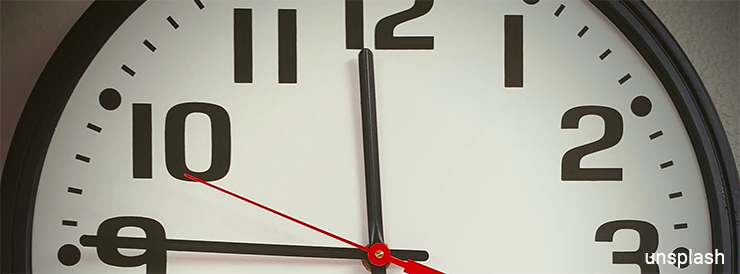
If you run an office with at least one hourly employee, you need an office time clock. It keeps payroll accurate, maintains compliance to labor laws, helps prevent time theft, and keeps things fair for your staff.
But not every office is the same, and not every office time clock is the same.
Sure, there are lots of offices. Maybe you’re needing an employee time clock for a medical office, dental office, business office, law office, or any variation.
Whatever the type, the best office time clock solution is not based on what you do. Instead, it's based on factors like employee count, locations, clocking preferences, and more. We'll explain in a second.
What's most important is your desire to change your office to be more efficient and cost effective. If your office doesn't use employee time tracking software, implementing it will instantly improve payroll processing, and cut costs.
First, this article is not a random list of competing products so we can list ourselves as number one. For that you'll have to search elsewhere.
Second, we admit we are biased. We are not going to tell you anything is "the best" or show examples. We're aiming to help you, as an office manager, determine what the best office time clock is for you and only you.
To do that, we first answer what an employee office time clock is, then ask detailed questions only you can answer. This should help give a clear understanding of what is best for you. If it includes Webtimeclock, great. If it doesn't, we hope this article helped you. Here are the questions we detail...
- Do you have a single location or multiple locations?
- How many employees do you have?
- How should employees’ clock in and out?
- Do you need employee scheduling?
- How do you handle time off requests?
- How do you handle timesheet approvals?
- What payroll provider do you use?
- Finally, we'll wrap up with a conclusion.

What is an office time clock?
An office time clock is anything that records when employees start work, and when they stop. That's really it. That can include employee office time clock software, a time clock machine, or a clock app. Anything for tracking time.
For payroll attendance, an office time clock is used for tracking regular hours, overtime hours, and any paid time off hours. An app may capture the time, but it's the time clock software that calculates it for you.
Beyond attendance, office time clock systems can also be used for tracking time on projects and tasks... job costing or billing clients. But that's a different discussion.
How to choose the best office time clock
As mentioned, there are many types of offices. It really doesn't matter if your office is medical, dental, professional, or otherwise. When making the best choice, consider these key questions.
1. Do you have a single location or multiple locations?
If your office has multiple locations, the best solution is to network them together. With a network, the office manager or payroll administrator can gather and process payroll hours from their own desk. No need for email, faxing, or travel.
Although it is possible for an IT service to network multiple locations together, the most cost effective and efficient way is to use an online time clock system. Cloud based systems are inherently networked because they leverage the web.
However, if your office has a single location, you don't necessarily need a network. It's possible to use a simple time card machine if you like. But with that solution, you won't be able to access your payroll data from outside the office, and neither will your accountant.
Recommendation - If you have multiple locations, use an online time clock system. Do the same with a single location if data needs to be accessed from the web.
2. How many employees do you have?
With less than 5 employees, manually processing payroll hours can be done in a reasonable amount of time. Providing you are thorough and don't make mistakes. Using a time card machine or stand-alone time tracking system can make sense.
But the more employees you have, the more labor intensive the process becomes. This can be significant considering the time required to do the work, making and correcting clerical errors, and organizing and storing data in case of an audit.
Recommendation - If you have more than 5 employees, do yourself a favor and implement employee time clock software. You'll save time, be more accurate, and cut administrative costs by at least 20%.
3. How should employees’ clock in and out?
Having each employee clock from a central location, such as a fingerprint clock is fine. But giving them more choices can be far more effective. For example, it can help make sure they remember to clock in. Here are a few examples.
A central office computer as a kiosk
Employee's individual desktop/laptop computers
Employee's individual smartphones
A PIN, badge swipe, or biometric time clock on the wall
An office landline telephone
A central time card printing time clock
Recommendation - If you want employees to clock from the web and from phones, or need GPS tracking and geofencing, you need an online time tracking system or time clock app. No stand-alone system can do this for you.
If you prefer employees not use phones, Webtimeclock includes a feature that prevents them. But if you do, we also feature GPS tracking and geofencing.
At Webtimeclock, we see many employees using office computers such as desktops or laptops. But as you can probably imagine, we also see many employees using smartphones, and notice it becoming the preferred method. But to keep things really simple, we also offer wall-mounted time clock hardware such as biometric time clocks.
4. Do you need employee scheduling?
It's common for an office hourly employee to have scheduled work hours, whether they are full-time, or part-time. You could simply post a calendar in your office for employees to follow. But that has its limitations.
If employee schedules change each week, maintaining paper calendars can be cumbersome. They constantly must be updated. To help, you could use an online scheduling software.
The best solution however is to use time clock software that includes scheduling. That way, each employee can clock in, view their timesheet, and schedule all in one app. It can also help you control overtime.
Recommendation - Scheduling is not always required, but if you need it, make sure your time clock vendor provides it. Start a trial and test it.
5. How do you handle time off requests?
Most offices offer time off such as PTO for their employees. It's good practice for you and your employees. But the administrative side can be a chore, especially if you offer accrued PTO as a bank of hours.
Since time clock software already records hours, it makes sense it also offers PTO and vacation accrual too. Ask the vendor, not all attendance software solutions provide PTO/sick accruals.
Additionally, it makes sense that employee time clock software allows each employee to formally request time off too. This way, it knows how many hours are available to the employee before a request is granted.
Recommendation - You could handle time off requests manually, but having it included with your software will make life so much easier.
6. How do you handle timesheet approvals?
It's best practice to review the accuracy of each employee timesheet prior to running payroll. It's also a recommendation to record who approved and when. This helps create an audit trail in case of discovery. If someone claims unfair wages or unpaid overtime, it's best to be prepared.
Additionally, it's best practice to have the employee approve their time card or timesheet too. Although it is not a requirement, it helps confirm accuracy and records and audit trail for the future... just in case.
You can do this with pen and paper, businesses have done this for years. However, handling this by time tracking software simplifies the process of creating the approvals and simplifies the process of storing them.
Recommendation - If you use time clock software, every timesheet should be retrievable at any time. Be sure Your software can easily report historical time records.
7. What payroll provider do you use?
Time clock time tracking is about payroll, or more specifically, transferring work hours to payroll for paychecks. How you submit each hour to your payroll provider can vary.
For example, you might email the hours to your rep, enter them manually in QuickBooks time sheets, or export them from your software and import into payroll. It all depends.
Most payroll providers allow you to import hours using text or CSV files. What you want to try to avoid is entering hours by hand. As it can be tedious and is prone to errors.
Time clock software can help with this too. Ask your vendor what integrations they offer and if it will work with your current provider.
Recommendation - Transferring payroll hours to your provider should be really easy. Be sure your time clock software vendor provides the integrations you need.
Conclusion
Our aim in this article was to show you, the office manager, how to determine what the best office time clock is for your company. We don't claim that anything is "the best". What matters most is what is "best" for you.
If you have more questions or want to learn more about Webtimeclock, please contact our support team, we'll be happy to assist.
Grab our RSS Feed
Webtimeclock is an online time clock plus optional online payroll. Have questions? Contact our support team, or call us at 1-800-450-2692. Sign up today for your free 15-day trail. We are located in San Diego (Carlsbad), CA USA.